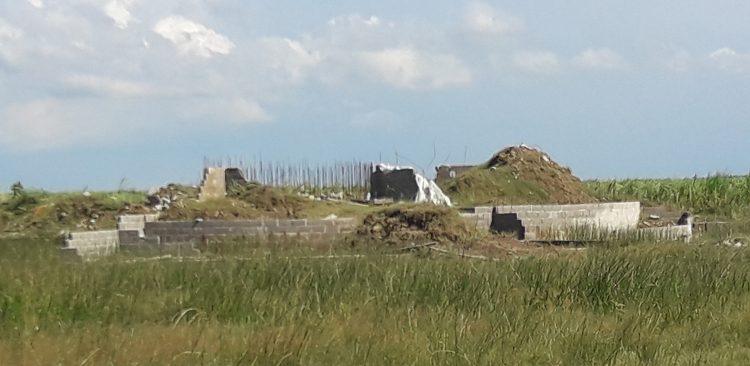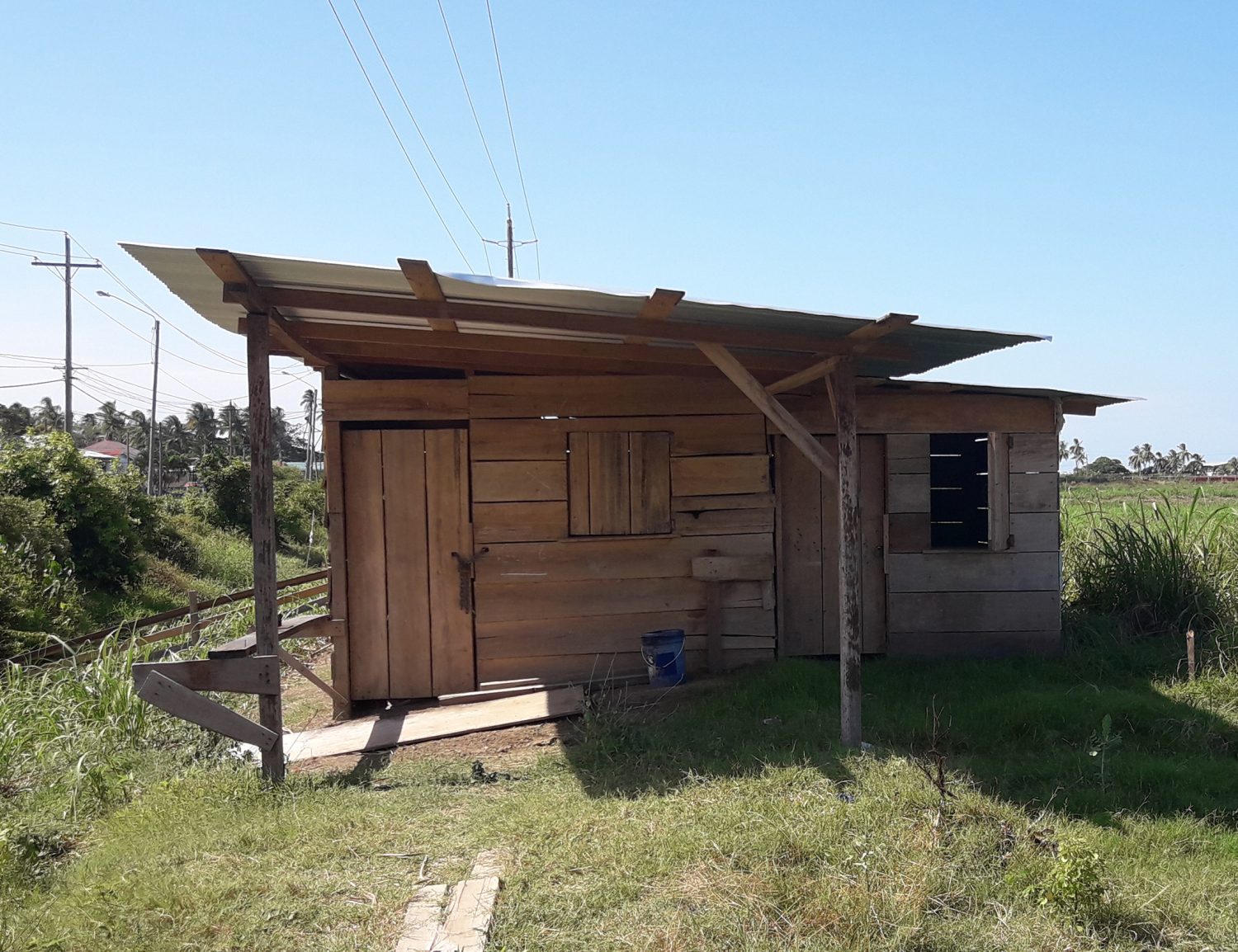More than four months after the base for the Indian Arrival Monument at Palmyra, Corentyne Berbice embarrassingly collapsed, there has been no word on when or if works will resume there.
The base for the US$150,000 bronze sculpture, which was gifted by the Government of India, crumbled in late April while works were ongoing in a bid to meet the May 5th Indian Arrival observance. It was said to be 85% complete at the time of the collapse.

Since then, the project has come under close scrutiny. While most opined that the cause of the collapse was substandard work, questions were also raised about the awarding of the $42 million contract for the construction to Linden-based company, Alternative Contracting Enterprise (ACE).
Work for the structure was procured through the Ministry of Education’s Department of Culture and Sport and then Minister of Education, Dr Rupert Roopnaraine had told Stabroek News that the ministry had solicited the help of the Ministry of Public Infrastructure (MPI) for an investigation, so as to guide the way forward.
Shortly before he resigned in July, Roopnaraine had said that he was still awaiting the report and since his subsequent move to the Ministry of the Presidency no word has been forthcoming from either the Ministry of Education or MPI on what happens now.
Stabroek News has tried for the past two weeks to elicit an update from government on the fate of the proposed monument to no avail.
The Ministry of Education’s Permanent Secretary, Melissa Tucker told this newspaper to check with MPI as they were responsible.
Cabinet took a decision that MPI would assume responsibility for oversight of the project in the wake of the collapse of the base.
But MPI’s Public Relations Officer, Desilon Daniels was adamant that her ministry was just assisting in the preparation of the report and not the one making any decisions as it pertained to resumption of works.
She in turn pointed back to the Ministry of Education but said she would nonetheless check with the deputy Permanent Secretary of MPI, since substantive PS Geoffrey Vaughn was on leave, and “hear what they had to say.”
However, there was no further word from her.
Continued checks with the Ministry of Education led to Mondale Smith, who is the Personal Assistant to current Minister of Education, Nicolette Henry. He informed that “word on Palmyra will come from the Ministry of the Presidency.”
“Check with the Ministry of the Presidency, they are responsible and will be able to update you,” Smith said when contacted.
Government’s Director of Public Information, Imran Khan, told Stabroek News that he too was trying to get an update on the works. On Thursday evening he said that he was “awaiting an update” but up to the time of publication he, too, could not say what was happening with the project.
Technical expertise
It was the Department of Public Information on June 6th that had announced that following the collapse of the base that the Government of India has offered to provide technical expertise for the monument’s erection and that this will be pursued, while specialised geotechnical survey services are to be contracted.
DPI had also said that preliminary findings found that a design report was not done neither were geotechnical surveys undertaken to determine soil properties since they were not budgeted for. Further, assumptions were made for the soil data; and the supervisory consultant who revised the project did so without adequate engineering analysis.
In addition, it was noted that the monument’s base should have been constructed using a four- foot wide footing, block walls were to have been infilled with structural concrete as opposed to the mortar being used at the time of collapse, and the internal base should have been eight inches thick reinforced concrete wall and not block work infilled with mortar.
DPI had suggested that the crucial lapses occurred under the former People’s Progressive Party/Civic (PPP/C) government and then Minister of Culture Dr Frank Anthony, who started the project.
However, in response Anthony accused the government of changing the original design which he believes contributed to the collapse. He charged the government with attempting to score cheap political points.
Checks at the Berbice site showed that no work had restarted as it was in the same state it was four months ago when works were halted.
Documents Stabroek News obtained from the National Procurement and Tender Administration Board show that the project comprised three phases.
Phase 1, which dealt with preparatory works, including construction of an access road, at the site, was awarded to Erron Lall Civil Engineering Works on September 12, 2016 at a cost of $43 million, after bids from 13 companies. The DPI statement on June 6th said that at that point $26.5 million was paid to the contractor and 60% of the works were completed.
Phase 2, which entailed the construction of the base, was contracted to Alternative Contracting Enterprise at a cost of $42.2 million.
The contractor had been paid $22.8 million up to that point. And while government gave no estimate of the works completed, an employee had told this newspaper it was 85% done. It was at this stage that the structure collapsed.
Phase 3 entails landscaping and finishing works at the site. Bids were received from 11 companies and an $8.2 million contract for the works was awarded to BK International. DPI had said that aspect of the works has since been suspended.

